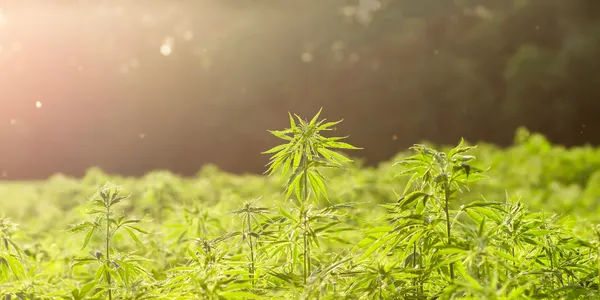
Hemp, CBD, the Brain and Pavlovian Fear Conditioning Extinction
Hemp, CBD, the Brain and Pavlovian Fear Conditioning Extinction
Among the most controversial plants on Earth in the recent past is that of the hemp plant. Its use has varied over time and particularly intriguing to many people is how certain constituents within this plant affect the brain and entire nervous system.
Hemp, also known scientifically as Cannabis sativa, has a long history of use by humans throughout the past several thousand years, with reports of its cultivation beginning at least 10,000 years ago.
Archaeological records show that the cultivation of hemp may have began around present day Taiwan and that the alleged first known hemp fabric was woven around present day Iraq, somewhere between 8,000 BC- 7,000 BC (1)
The use of the seeds and various oils were consumed in and around ancient China throughout this time and the fiber was used to weave cloth and spin yarns. Additional archaeological findings reveal that hemp fiber-based textiles spanned from ropes, bowstrings and cloths, (pronounced cloths and not clothes) and that hats, shoes and robes were also made from hemp in the Zhou Dynasty. (2)
Ancient Chinese burial sites have also been found to contain paper containing hemp fiber, dating all the way back to around 150 BC, as the practice of paper-making was an ancient Chinese secret kept for centuries. This hemp paper was made by mixing crushed hemp fiber into a pulp with water and the bark from mulberry trees. (3)
The recontinuation of hemp paper usage throughout our society has been accelerating over the recent few years, along with other industrial and personal applications of the hemp plant.
Hemp is an environmentally-regenerative plant and is known to help sequester carbon dioxide and has also been used to phytoremediate nuclear waste around Chernobyl and other nuclear waste sites. (4) (5)
Hemp is also being used in building materials like hempcrete, because of its known properties of being mold, fire and pest-resistant. Hempcrete also has been said to be stronger than steel and is 1/8th the weight as regular concrete. (6)
With hemp still be explored, developed and utilized throughout our world, including that of hemp plastics, hemp biofuels and endless other applications, the presence of certain compounds found naturally within the hemp plant continue to fascinate researchers and the roles these special compounds exert on human and animal neurophysiology and cognitive functioning within the brain.
Among the 120 plus different phytocannabinoids that are found naturally within the hemp plant, there are two that have received the most attention: delta-9-tetrahydrocannabinol, or commonly known as THC; and cannabidiol, which is commonly known as CBD.
These different plant compounds are able to communicate with the endocannabinoid system, which is a neuromodulatory system naturally present within us humans as well as other animals. Phytoannabinoids communicate with CB1 and CB2 receptors all throughout the body, which "regulates and controls many of our most critical bodily functions such as learning and memory, emotional processing, sleep, temperature control, inflammatory and immune responses, and eating." (7)
Research conducted on these different phytocannabinoids over the past several decades has shown the world many riveting scientific discoveries, but perhaps among the most intriguing and important discoveries of phytocannabinoids and the endocannabinoid system relates to "contextual fear memory extinction," or which is more widely known as "Pavlovian fear conditioning." (8)
Pavlovian fear conditioning is defined as "a behavioral paradigm in which organisms learn to predict aversive events." (9) This can occur when an aversive stimulus, like a painful sensation, is associated with a particular neutral context, like a room or a sound--resulting in the expression of fear responses to the originally neutral stimulus.
What researchers have been finding though is that these neural pathways that have been created in the brain can be modulated and rendered "extinct."
Fear conditioning extinction is the process of "a decline in conditioned fear responses following non-reinforced exposure to a feared conditioned stimulus." (10) What this means is that learned fear is unlearned and averse events that once created a fear response, do not cause the same fear response as they once did.
Where this gets compelling is that research has shown (11, 12, 13) that the naturally-occurring phytocannabinoid "cannabidiol" can modulate learned fear in 4 major ways:
1. It strongly modulates fear expression.
2. It disrupts memory reconsolidation, which leads to sustained fear attenuation upon memory retrieval.
3. It enhances extinction, the psychological process in which exposure modulates learned fear.
4. It acutely reduces the experience of auditory fear expression.
This neurobiological cascade of events transpiring in human and animal physiology has great and important implications, especially for a society that has been conditioned to fear much of our surrounding external environment.
These neuropsychological effects of naturally-occurring cannabidiol and other phytocannabinoids are part of the reason why people have been consuming hemp for so long, and especially in the recent years since the signing of the Farm Bill in the United States.
The use of naturally occurring cannabidiol (CBD) from hemp continues to grow throughout the world for both humans and animals, especially in relation to mood support, brain health, focus, outlook, healthy sleep cycles and modulation of a healthy inflammatory response within the body.
While CBD is commonly used and known, it is just one naturally-occurring phytocannabinoid found within the hemp plant and research has shown that consuming the 120 plus different phytocannabinoids can be more supportive than consuming just one CBD cannabinoid alone. (14)
This creates a phenomenon in the brain and body known as "The Entourage Effect" and is defined as the combination of compounds found within the hemp that plant work synergistically together to create unique effects that might not be experienced through the use of single, isolated compounds alone. In other words, "the whole is greater than the sum of the parts" when using the full spectrum of phytocannabinoids within the hemp plant and its oil.
Issues can arise when hemp plants are bred for higher percentages of various compounds, which can then throw off the natural ratio of these different compounds. Many hemp plants are also commonly sprayed with fungicides and insecticides that can be damaging to the environment, humans and animals.
One particular strain of hemp though is referenced by NCBI, The National Center for Biotechnology Information, as the gold standard in hemp genome sequencing throughout the world. (15) This strain is also grown without the use of pesticides in Iowa and Colorado in the United States and also uses an industry-unique "infusion" method that surpasses in purity the methods of regular CO2 (pronounced C-oh-2) and hexane extraction.
We have happily partnered with this exclusive source for this full spectrum hemp oil and if you are interested for yourself or your pets, please click the link in the description below.
Click Here For Gold-Standard Genome Full Spectrum Hemp Oil
Written by Lance Schuttler
References
(1) https://www.thedailybeast.com/a-history-of-hemp-in-the-us-brought-to-you-by-charlottes-web
(2) http://www.internationalhempassociation.org/jiha/iha02111.html
(3) https://deionescu.com/history-of-cannabis-in-ancient-china-part-ii/
(4) https://www.dezeen.com/2021/06/30/carbon-sequestering-hemp-darshil-shah-interview/
(5) https://theemeraldmagazine.com/how-hemp-is-helping-decontaminate-the-earth/
(6) https://hempfoundation.net/is-hemp-really-stronger-than-steel-how/
(7) https://www.health.harvard.edu/blog/the-endocannabinoid-system-essential-and-mysterious-202108112569
(8) https://www.frontiersin.org/articles/10.3389/fphar.2016.00493/full
(9) https://pubmed.ncbi.nlm.nih.gov/11520922/
(10) https://www.ncbi.nlm.nih.gov/pmc/articles/PMC1409828/
(11) https://www.frontiersin.org/articles/10.3389/fphar.2016.00493/full
(12) https://www.ncbi.nlm.nih.gov/pmc/articles/PMC5121237/
(13) https://www.ncbi.nlm.nih.gov/pmc/articles/PMC6642657/
(14) https://www.ncbi.nlm.nih.gov/pmc/articles/PMC7324885/
(15) https://www.ncbi.nlm.nih.gov/genome/annotation_euk/Cannabis_sativa/100/
Stay In The Know
With adventures, business projects, travel and life occurring, the best way to receive first-to-know and behind-the-scenes updates is through my newsletter.

